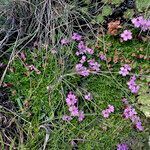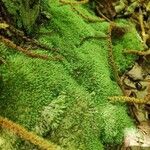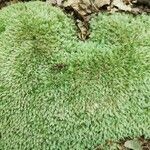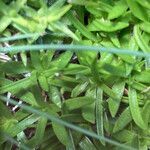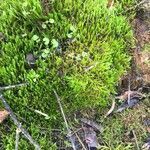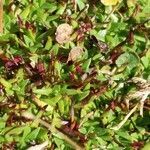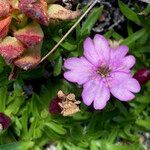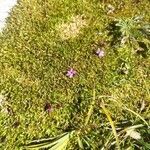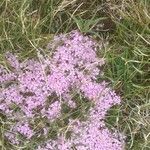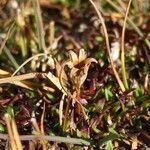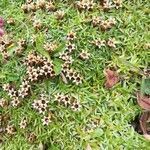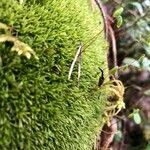Plants perennial, mat-or cushion-forming, subglabrous; taproot stout; caudex much-branched, becoming woody. Flowering stems erect, leafy proximally, 3-6(-15) cm, old leaves persistent at base. Leaves mostly basal, densely crowded and imbricate, sessile; blade 1(-3)-veined, linear-subulate to lanceolate, 0.4-1(-1.5) cm × 0.8-1.5(-2) mm, margins cartilaginous, often ciliolate especially proximally, apex acute, glabrous to scabrous. Inflorescences solitary flowers. Pedicels 2-40 mm. Flowers bisexual or unisexual, all plants having both staminate and pistillate flowers, others having only pistillate flowers, subsessile or borne singly on peduncle; calyx 10-veined, lateral veins absent, tubular to campanulate, (5-)7-10 mm, herbaceous, margins often purple tinged, dentate, sometimes ciliate, ± scarious, glabrous, lobes lanceolate to ovate, 1-2 mm; petals bright pink, rarely white, limb unlobed to shallowly 2-fid, 2.5-3.5 mm, base tapered into claw, auricles and appendages poorly developed; stamens exserted in staminate flowers, not so or aborted in pistillate flowers; styles 3. Capsules 3-locular, cylindric, equaling or to 2 times calyx, opening by 6 recurved teeth; carpophore ca. 1 mm. Seeds light brown, reniform, 0.8-1(-1.2) mm broad, dull, shallowly rugose. 2n = 24.
More
A herb. It forms small hummocks of leafy stems. They are woody at the base. They are 5-15 cm tall. It spreads 10-100 cm wide. The dead leaves remain attached. The leaves are very narrow. The flowers are single and pink or purple. They sit just above the leaves.
